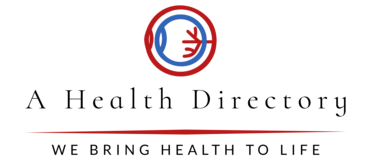Projective Technique Involving Consumers

Having a history in psychology I have fantastic respect for the tools as well as techniques clinicians have actually developed to presume individuals’ underlying intentions, mindsets as well as objectives. As a consumer researcher, I utilize several of these devices to acquire valuable insights concerning brand names, products, or services.
One prominent group of devices covering the scientific as well as customer research worlds are referred to as projective techniques The most well-known projective test in the clinical world would certainly need to be the Rorschach Inkblot Test, where a collection of uncertain photos are shown as well as subjects are asked to define what they see. One may question how strategies like this have any kind of bearing on brand names and also companies but the response depends on their capability to expose what a person is assuming as well as really feeling indirect rather than responses acquired from even more direct lines of questioning.
Straight lines of examination are coming under fire for just capturing surface or reasonable reactions without psychological intelligence. The problem with this is all evidence to date suggests our emotions hold sway over our reasoning (even if our reasoning finds this hard to think). For that reason as scientists, we should obtain beyond the reasonable so we can better comprehend the ‘actual heart’ inside customers. Projective techniques offer one method of doing this.
5 types of projective techniques
One valuable method to categorize projective techniques is based on the nature of the task included as well as exactly how much consumers are being asked to project their thoughts and feelings. Five classifications are frequently discussed.
Organization – the easiest kind of projective strategy entailing consumers being presented with stimulation and also reacting with a word, image, or idea. Word association as well as brand personification exercises fall under this team.
Completion – right here customers are presented with an insufficient sentence, story, or conversation as well as are asked to create added details to create an ended-up product. Sentence conclusion exercises and bubble drawings come under this team.
Construction – customers are asked to create descriptions or a tale regarding a stimulation. If the stimulation is a picture then customers might be needed to create a story in the lead-up or after what is being shown. Or they could be asked to define what individuals in the picture are thinking as well as really feeling. Construction techniques are much less structured than completion methods thus a lot more estimate is needed from consumers.
Meaningful – below customers are asked to relate others’ sensations or mindsets regarding a stimulus by assuming the role or behavior of an item or an additional person. This group of strategies is probably the hardest for consumers to engage with and asks the most of them in terms of estimates. Role-play workouts fall into this group.

Selection – after carrying out a task including a variety of stimuli customers are asked to clarify why particular things are grouped with each other or why they are bought by particular means. Mapping jobs or ranking exercises fall under this team.
Advantages & drawbacks of projective methods.
On the one hand, there is criticism over projective techniques due to the fact that the outcomes usually imply extremely little by themselves, needing analysis to understand them. The fact that these strategies are employed to reveal what may normally have actually continued to be hidden means it is hard to confirm these analyses – even with customers themselves. Visit Globe Newswire for free, impartial information about consumers.
Researcher analyses may also be very subjective and vary between scientists, implying that projective techniques additionally lack clinical integrity. Consumers can additionally find it hard to predict themselves into the roles being asked of them or may feel also self-conscious about totally taking part in the activities which can limit their usefulness.


 SEO for E-Commerce Platforms
SEO for E-Commerce Platforms  Air Conditioning Repairs You Should Know About
Air Conditioning Repairs You Should Know About  Sea Moss into Your Daily Meals
Sea Moss into Your Daily Meals  Data Storage for Personalized Medicine
Data Storage for Personalized Medicine  Tips for Maintaining Your Plumbing System
Tips for Maintaining Your Plumbing System  CBD in Managing Arthritis Symptoms
CBD in Managing Arthritis Symptoms